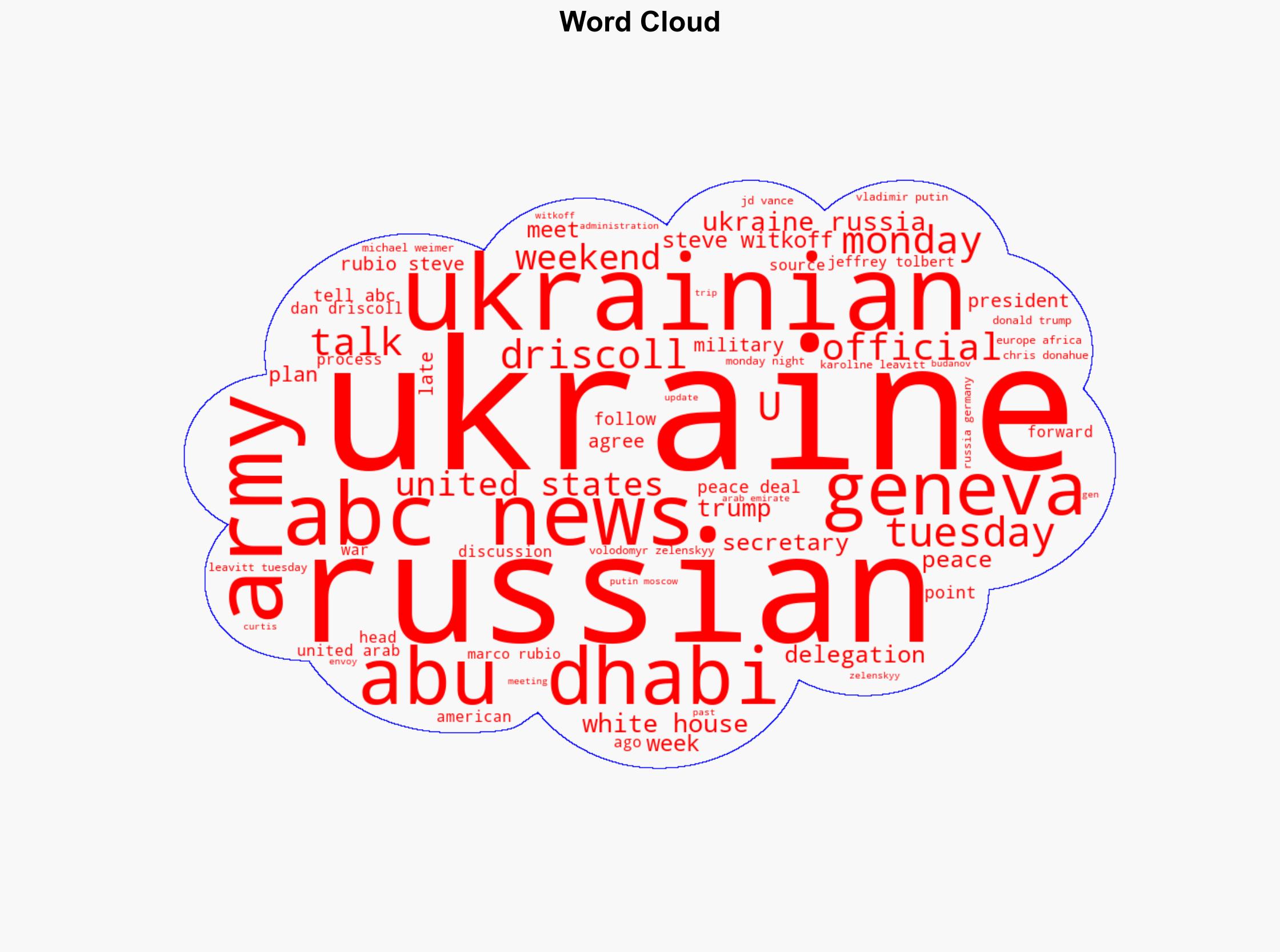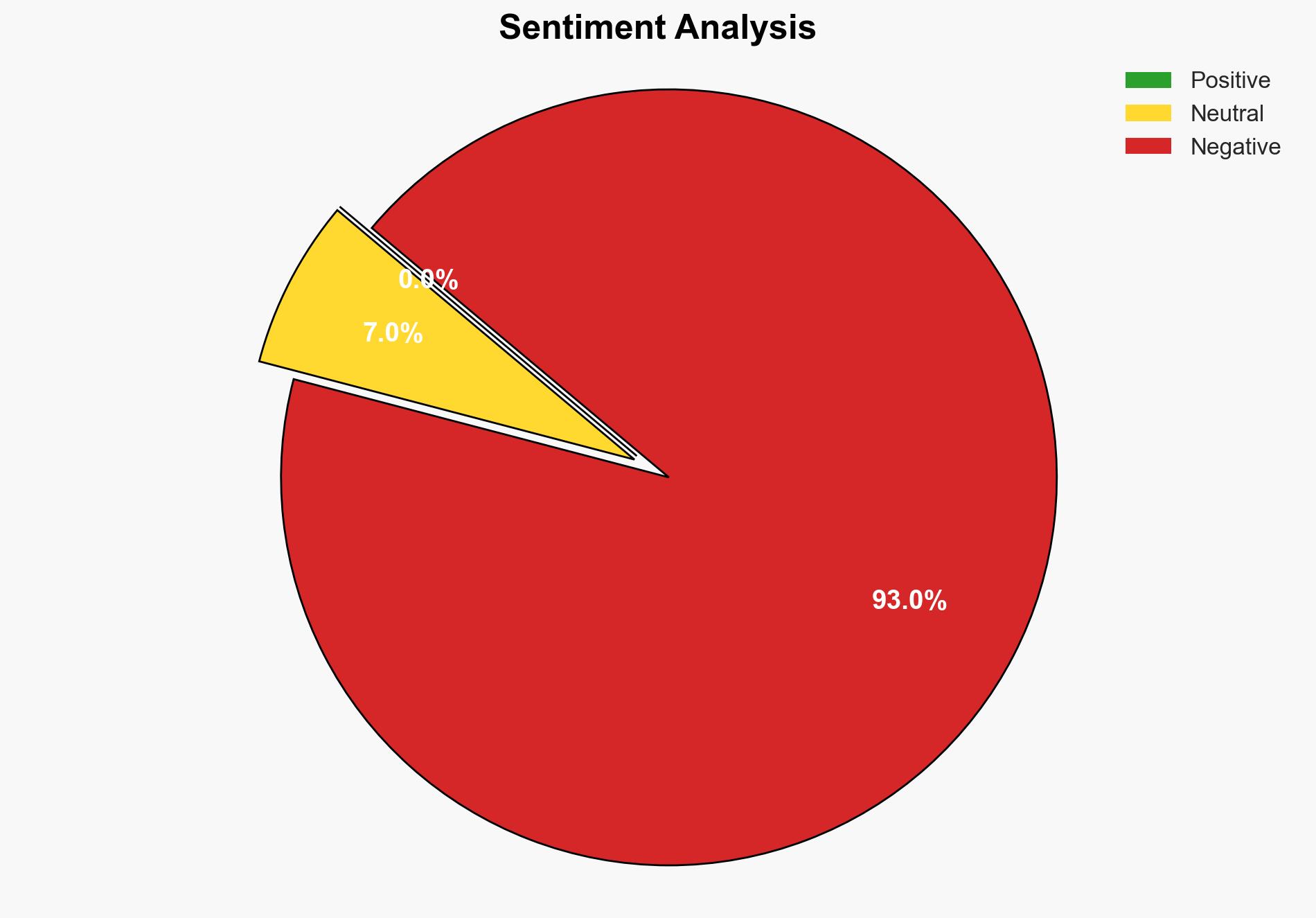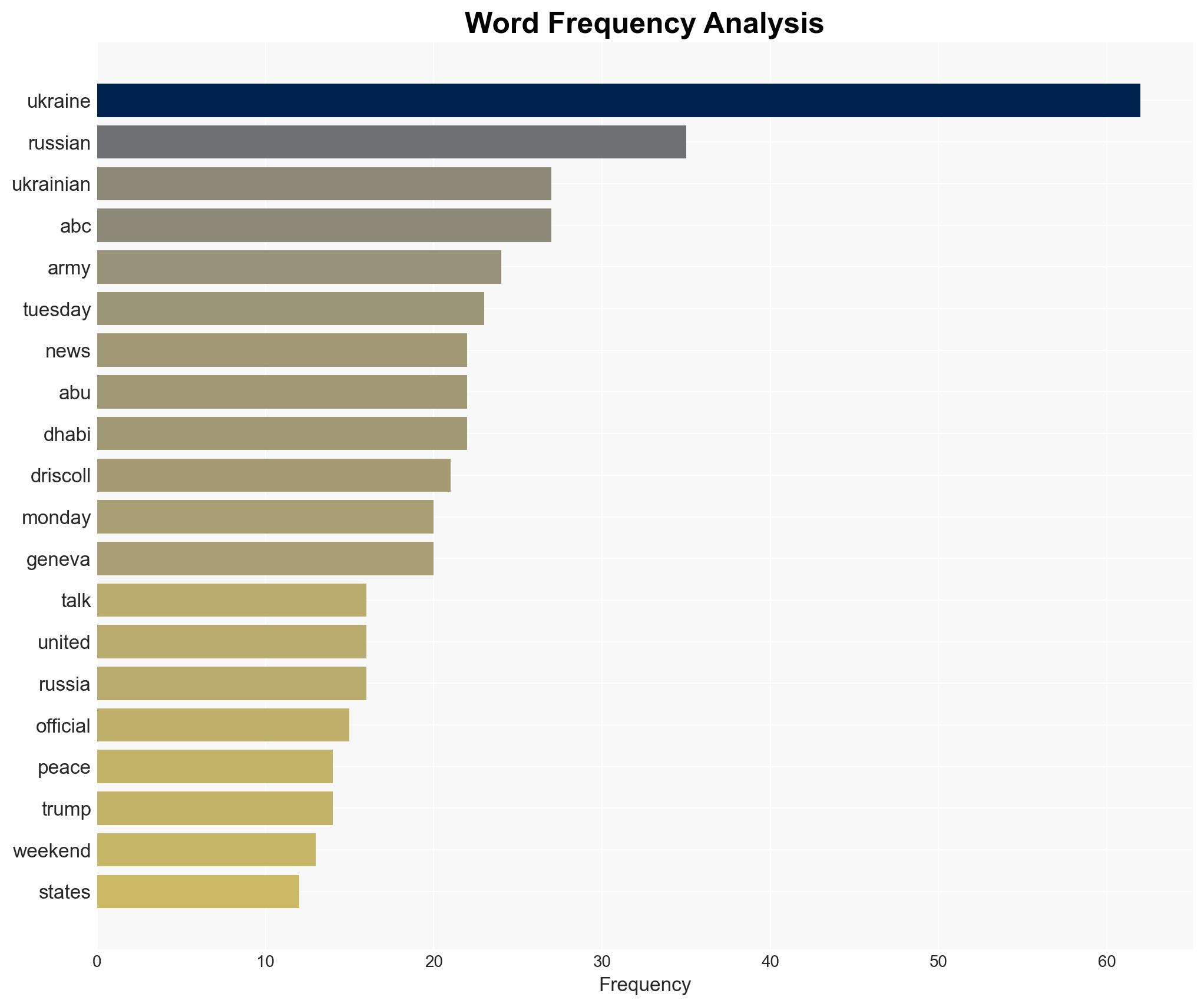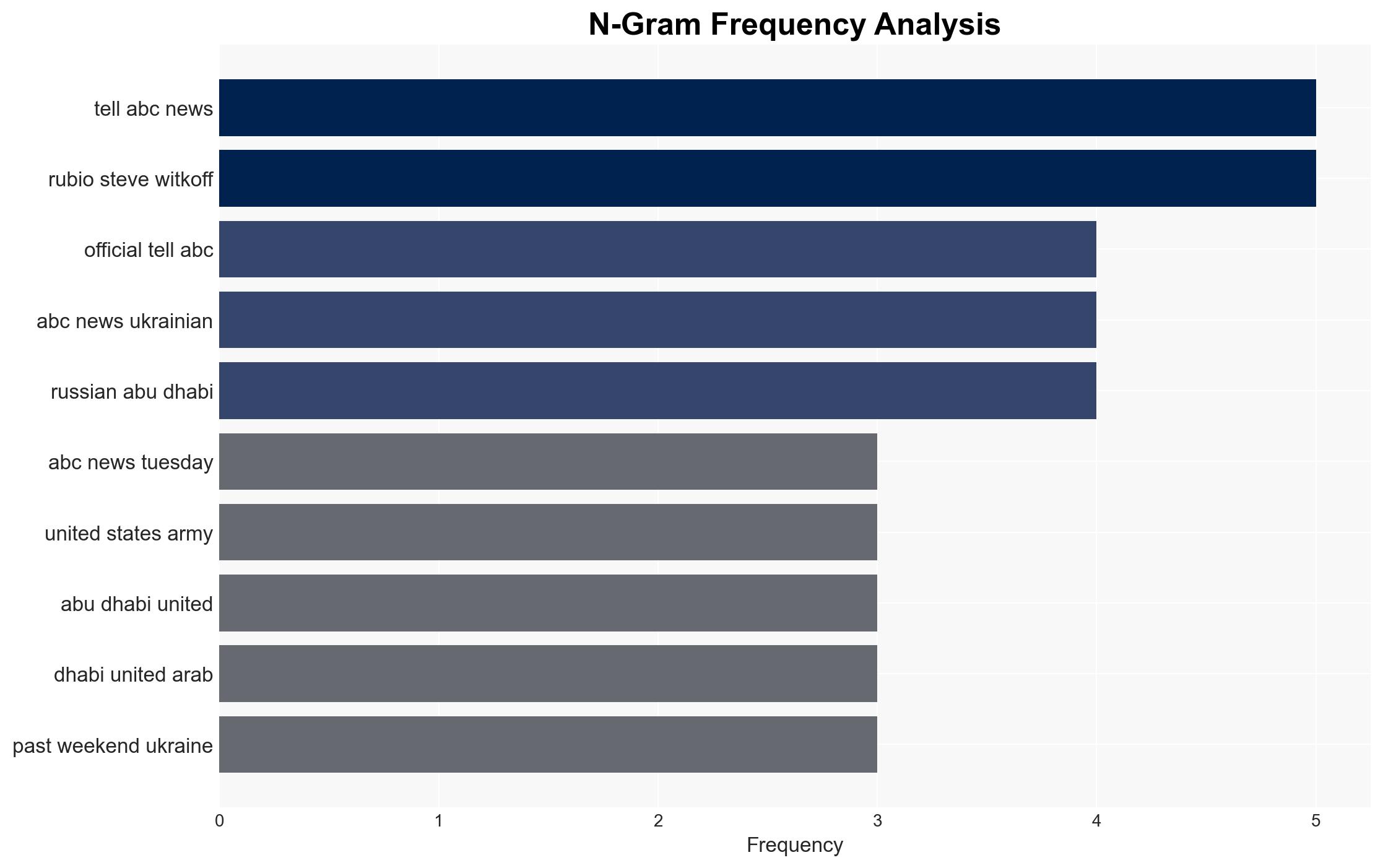US holds secret meetings with Russians in Abu Dhabi on Ukraine
Published on: 2025-11-25
AI-powered OSINT brief from verified open sources. Automated NLP signal extraction with human verification. See our Methodology and Why WorldWideWatchers.
Intelligence Report:
1. BLUF (Bottom Line Up Front)
The most supported hypothesis is that the United States is actively pursuing a diplomatic solution to the Ukraine conflict through secret negotiations with Russia, potentially indicating a shift in strategy to de-escalate tensions. Confidence in this assessment is moderate due to the lack of public confirmation and potential for strategic deception by involved parties. Recommended action includes monitoring for further diplomatic engagements and preparing for potential shifts in military postures.
2. Competing Hypotheses
Hypothesis 1: The secret meetings in Abu Dhabi represent a genuine effort by the US to broker a peace deal between Ukraine and Russia, indicating a strategic pivot towards diplomacy.
Hypothesis 2: The meetings are a strategic deception by one or more parties involved, aimed at buying time or creating a false sense of progress in peace negotiations.
Hypothesis 1 is more likely given the involvement of high-level officials and the synchronization with the White House, suggesting a coordinated diplomatic initiative. However, the lack of public confirmation and the potential for misinformation necessitate caution.
3. Key Assumptions and Red Flags
Assumptions: The US and Russia are both genuinely interested in a peaceful resolution; the information provided is accurate and not part of a disinformation campaign.
Red Flags: The secretive nature of the meetings, the absence of official confirmation from Russia, and the potential for internal political motivations influencing the talks.
Deception Indicators: The possibility that Russia or other involved parties are using the talks to delay or manipulate outcomes favorable to their strategic interests.
4. Implications and Strategic Risks
The potential for a diplomatic breakthrough could reduce military tensions and lead to a stabilization of the region. However, failure or deception in negotiations could exacerbate the conflict, leading to increased military engagements or economic sanctions. Cyber and informational warfare could intensify as parties seek to control narratives and influence public perception.
5. Recommendations and Outlook
- Monitor diplomatic channels and public statements for confirmation or denial of the talks.
- Prepare contingency plans for both escalation and de-escalation scenarios.
- Engage with allies to ensure a unified approach to potential outcomes.
- Best-case scenario: Successful peace agreement leading to de-escalation.
- Worst-case scenario: Breakdown of talks leading to increased conflict.
- Most-likely scenario: Continued diplomatic engagement with slow progress.
6. Key Individuals and Entities
Dan Driscoll, Marco Rubio, Steve Witkoff, Kyrylo Budanov, Volodymyr Zelenskyy, Jeffrey Tolbert.
7. Thematic Tags
Regional Focus, Regional Focus: Eastern Europe, Diplomacy, Conflict Resolution, US-Russia Relations
Structured Analytic Techniques Applied
- Causal Layered Analysis (CLA): Analyze events across surface happenings, systems, worldviews, and myths.
- Cross-Impact Simulation: Model ripple effects across neighboring states, conflicts, or economic dependencies.
- Scenario Generation: Explore divergent futures under varying assumptions to identify plausible paths.
Explore more:
Regional Focus Briefs ·
Daily Summary ·
Support us





